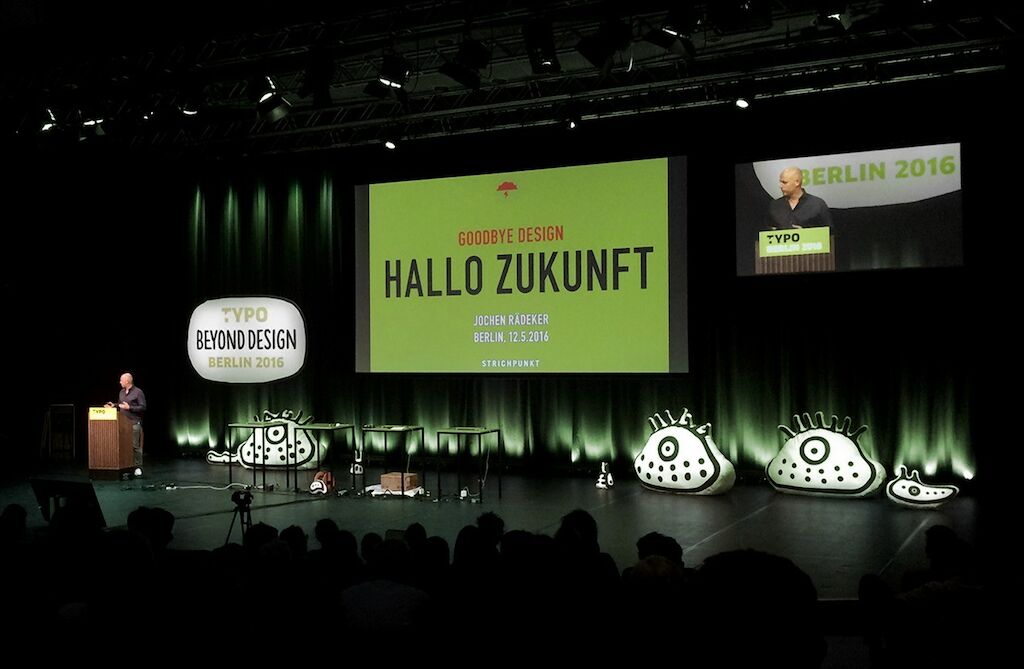How would a dedicated designer give a speech at the TYPO Berlin 2016 conference on the theme “Beyond Design”? Isn’t that like sawing off one’s own arm? Especially since today’s ABCs of successful branding stand for algorithms, big data, and content. For the D (design), only little room seems to be left. According to Hermann Hesse, though, in every ending there’s a beginning. Here are seven paradigmatic shifts and opportunities for design in the future — or preferably, design today.
- The end of author-dominated design is the beginning of co-creation.
Marketing gurus and star designers are long gone. Instead, purchasing negotiations are taking over. This includes periodical reviews of the customer-agency relation — and pitches. Luckily, this paves the way for something bigger: co-creation.
Let’s face it: clients have great ideas and they know their field better than an agency would. There is the chance for inspiring joint design thinking and powerful, agile working sessions. Interdisciplinary teams, in which any kind of profession can contribute ideas, are better than a single star designer. This doesn’t make design a democratic process; it just opens the path for greater ideas by going beyond design together, and it certainly leads to better results.
- The end of aesthetics is the beginning of thinking.
There’s a search-engine marketing company who gets you a top-ten Google ranking for a derisory sum of 119 euro. That company is neither asking for a logo nor a designer. It’s them being our competitors, not design agencies. Because brands like these no longer need to be brought into shape for successful business. Looking at the bright side, this is the beginning of the era of thinking — design thinking. It’s about chaos, trial, and error. Being on the beam is the new beauty. Design is about to become measurable and manageable. Thinking enables design to give good reasons why a particular design is the right one — reasons way beyond taste. Thus, great design demonstrates power, clarity, creativity, consistency, and compatibility across all media.
- The end of the function is the start of a conscious attitude.
Is it still key to a guidance system in an airport that tourists and travellers make their way to the gate as fast as possible? Instead, shouldn’t they take their time and rather be meandering through the numerous duty-free stores? The quicker they’re getting ahead, the smaller the sales. Which airport would want that? On the other hand, which designer would want to go that way?
This is the beginning of showing attitude and taking a position. Designers need to know why they do what they do — and what for. Certainly tools have changed, but skills, power, and impact haven’t. It’s why anyone not taking up a position isn’t a designer but someone prettying up things. In order to use our power properly, designers need to show attitude and be attentive beyond design. This includes, as well saying “yes” rather than “no,” sticking to it, irrespective of whether a client is waving a big budget at you.

